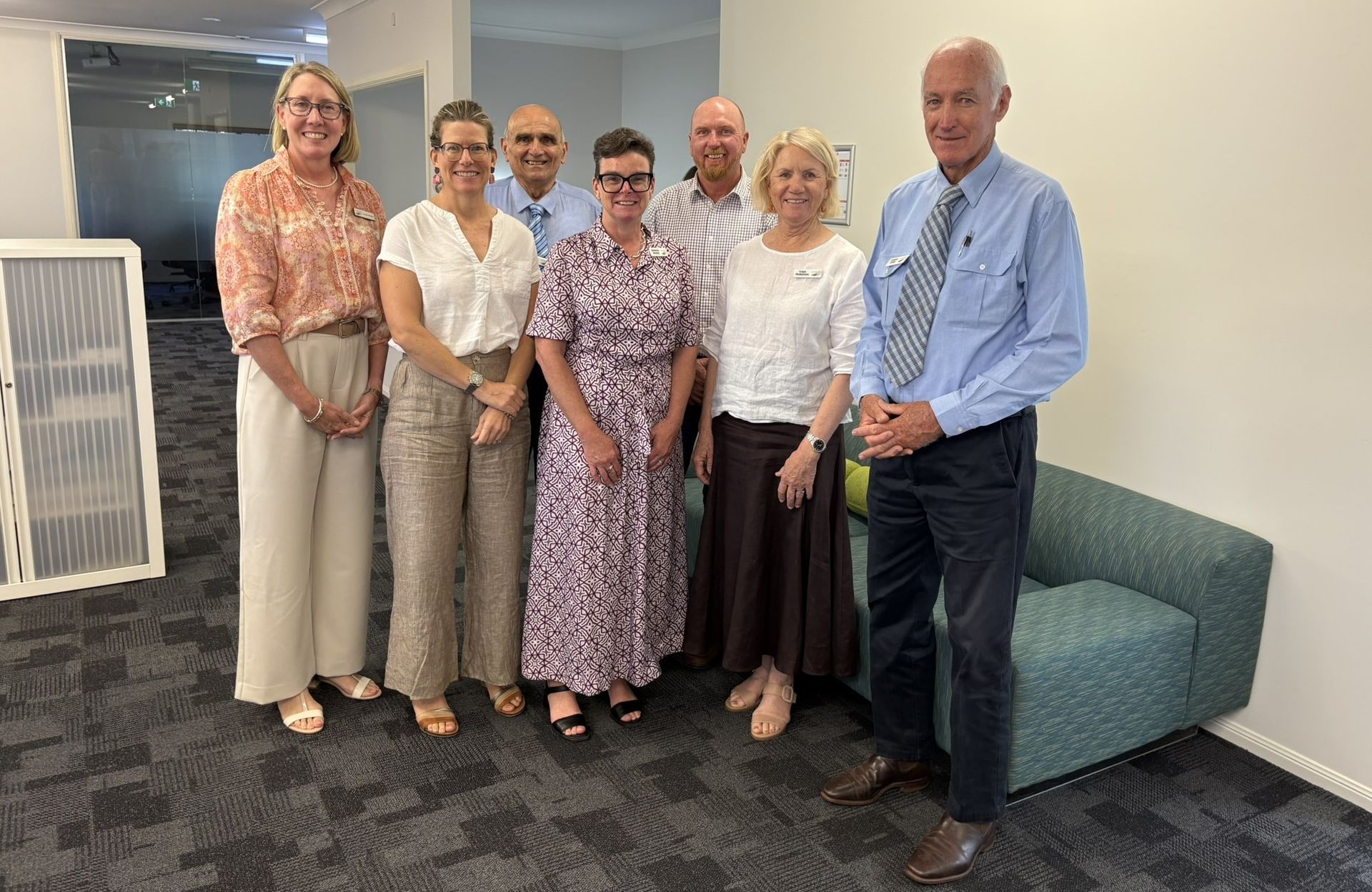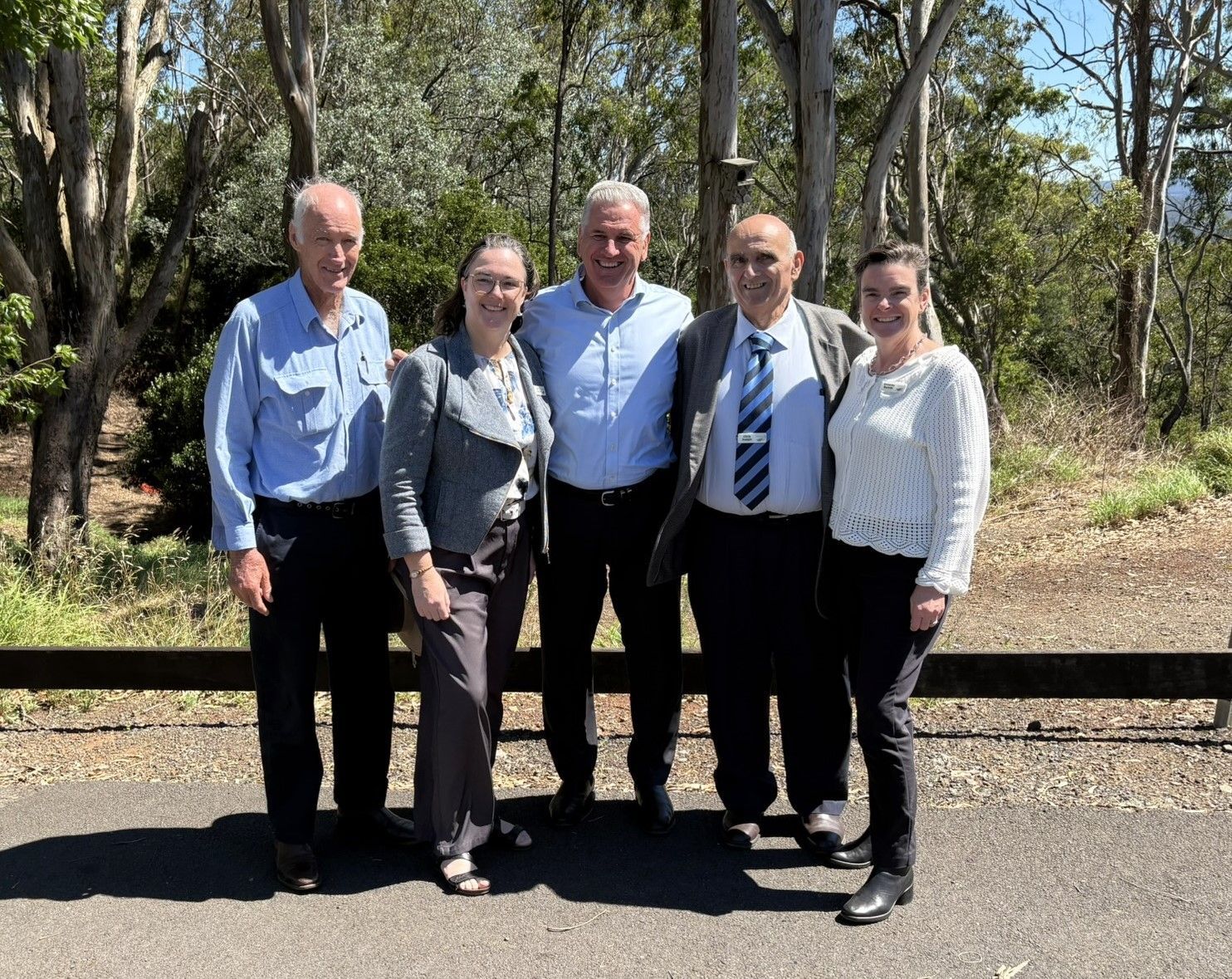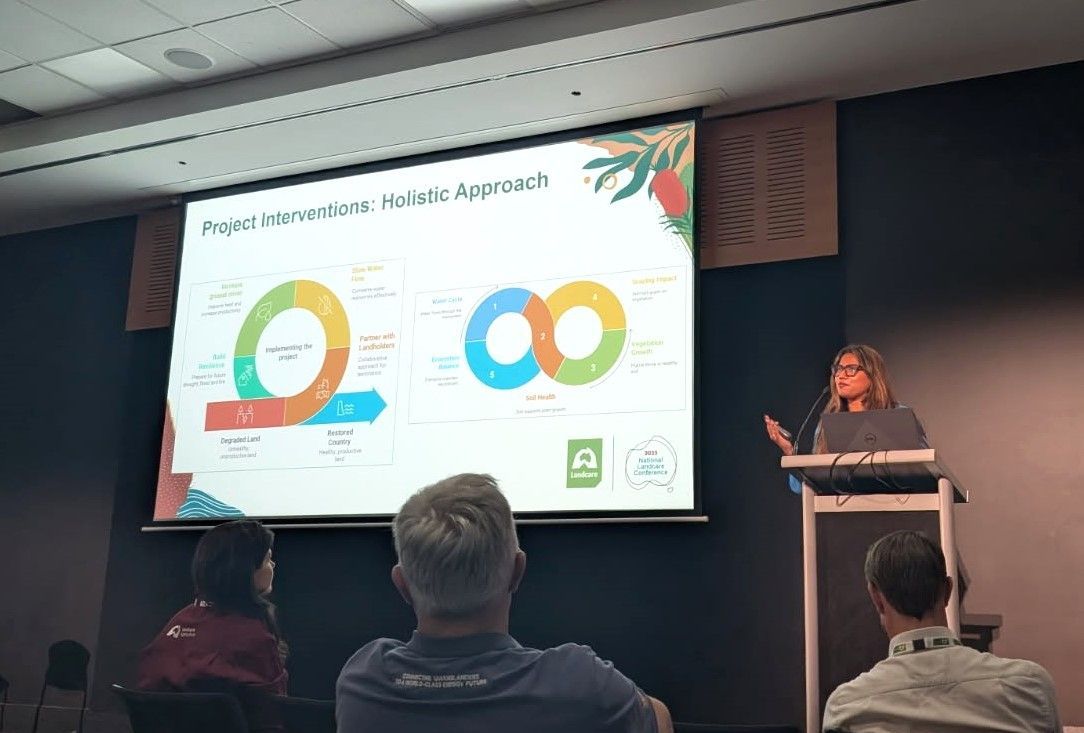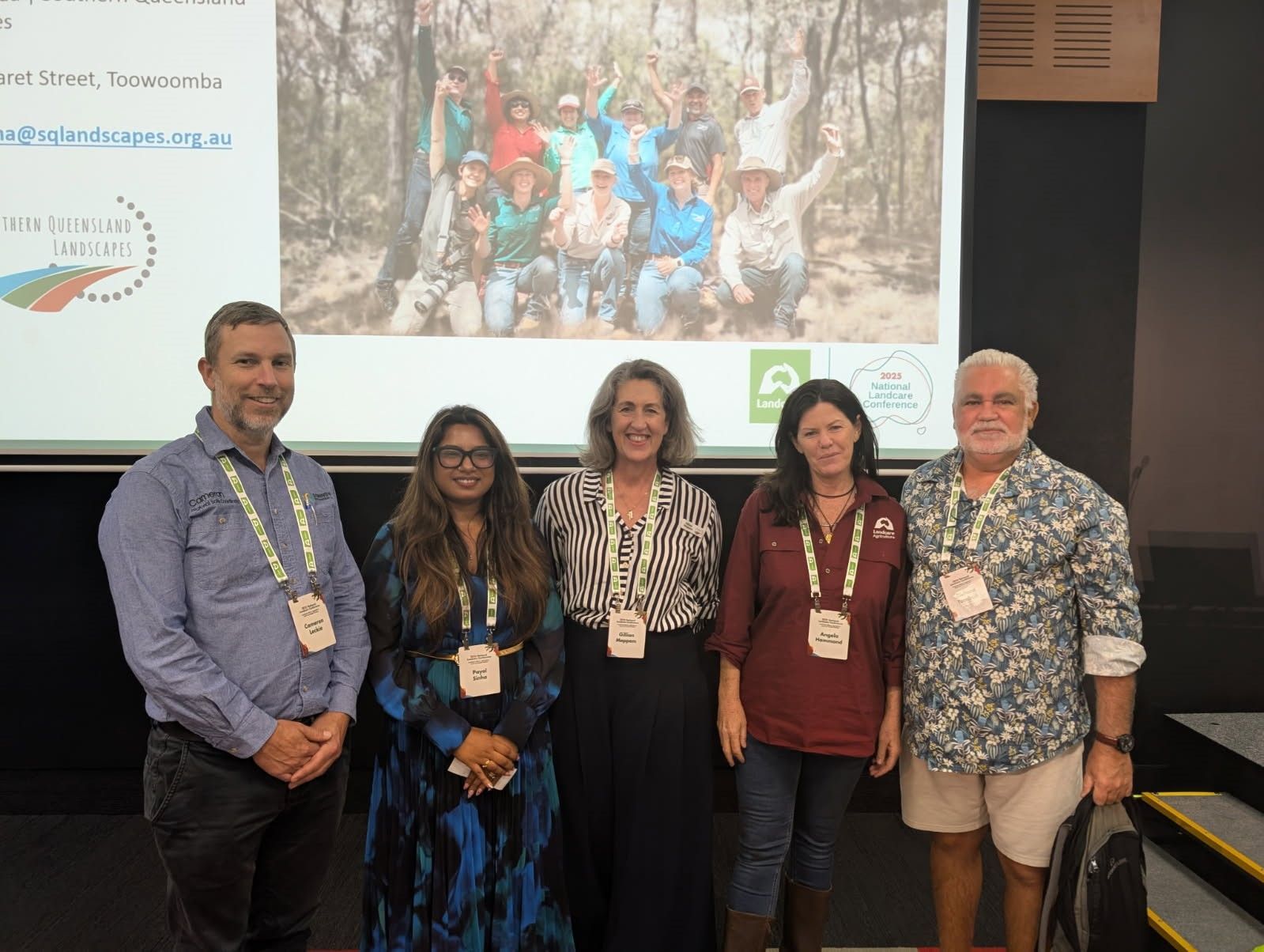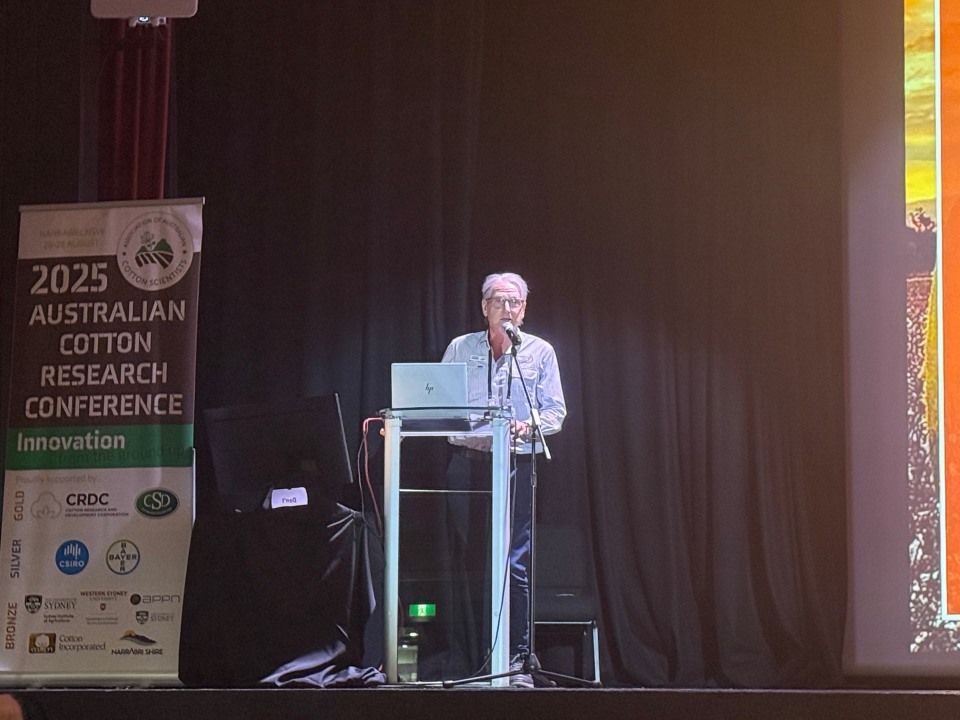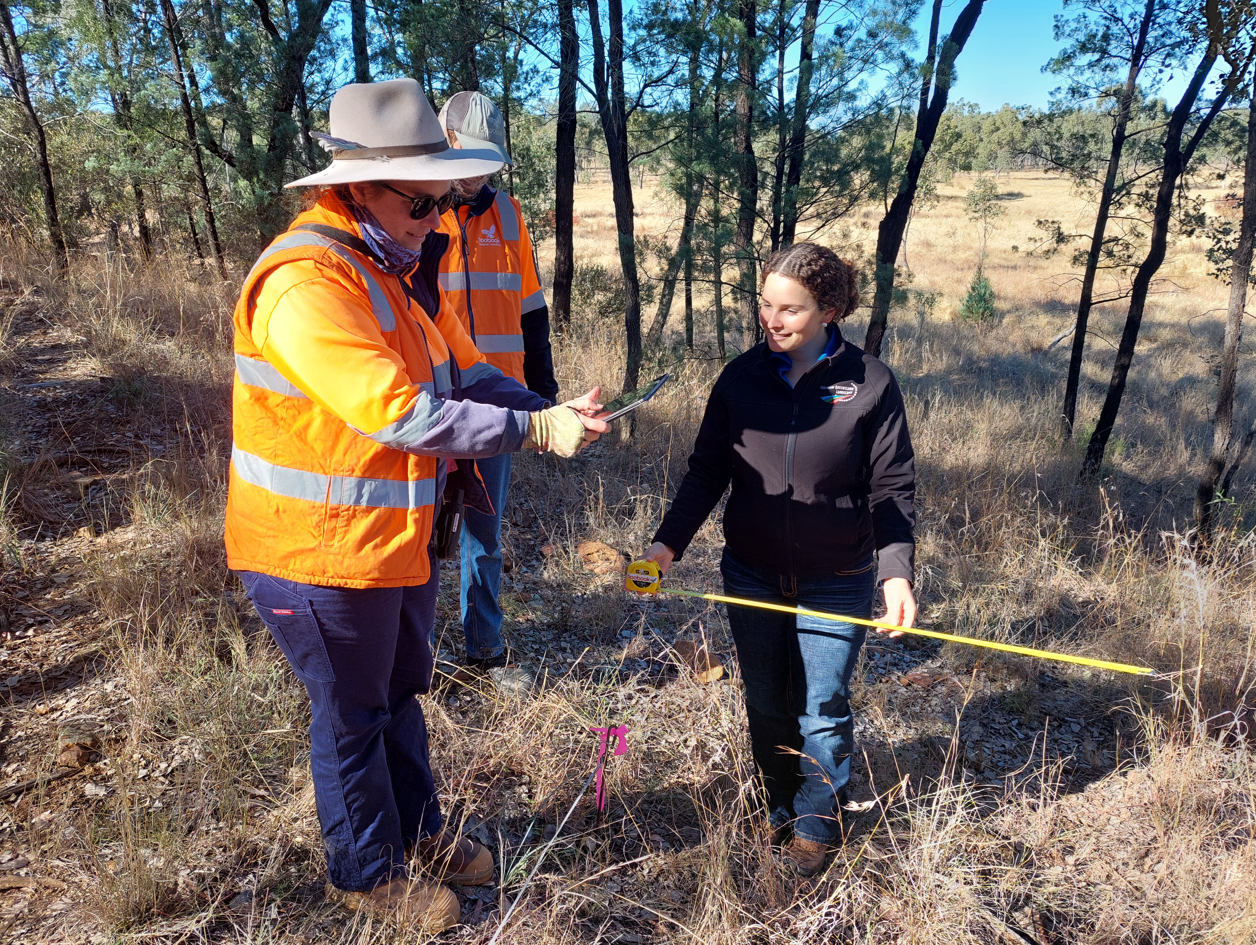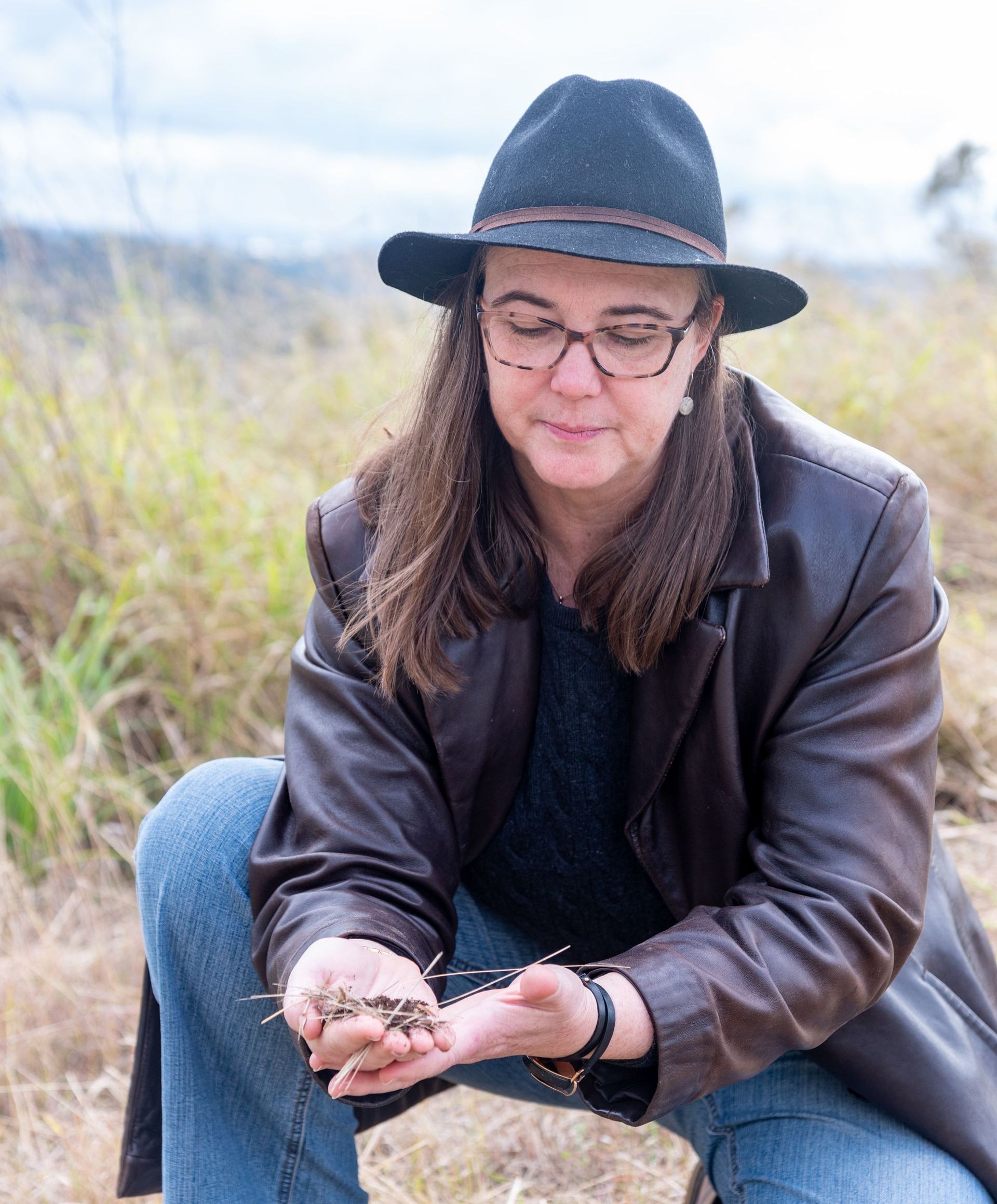Southern Queensland Landscapes is proud to celebrate the United Nations International Day of Women and Girls in Science this February 11th.
We caught up with three of our environmental scientists, Principal Project Officer Holly Hosie, Senior Project Officer Natasha Mylonas, and Project Officer Isabella Murphy to hear about their experiences as women in science.
Senior Project Officer Natasha Mylonas has worked in the Natural Resource Management industry for four years, deciding to pursue a career in science thanks to her highschool biology teacher.
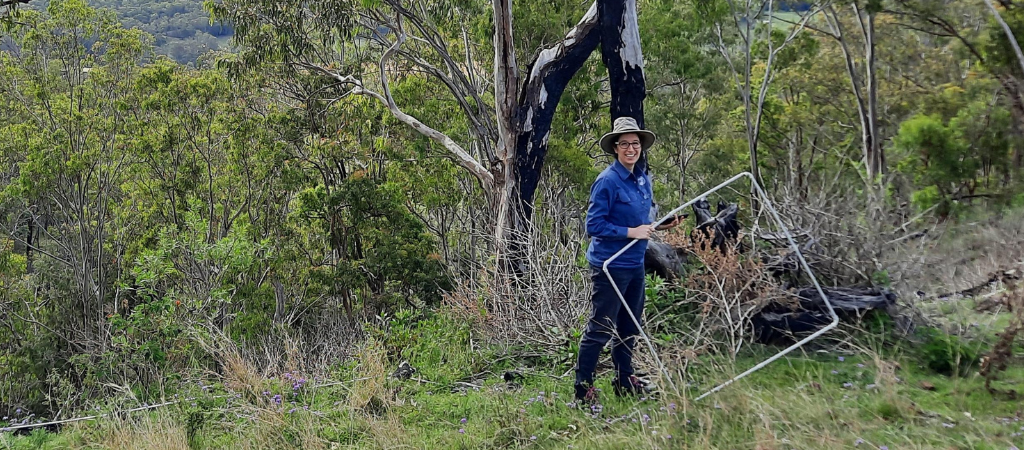
Senior Project Officer Natasha Mylonas conducting a site assessment.
“I had the best biology teacher in the world, she really ignited my passion for science with her enthusiasm. I guess I just always spoke the math and science language more than anything,” Natasha Mylonas said.
“Having a female role model in science - it can really help people define their career path,” Ms Mylonas said.
“It’s great to work with other women in our industry and create more positive role models for young women in science, and it’s really inspiring to see women making a difference in landcare,” she said.
Project Officer Isabella Murphy agreed that positive female role models helped to kick-start her career in science.
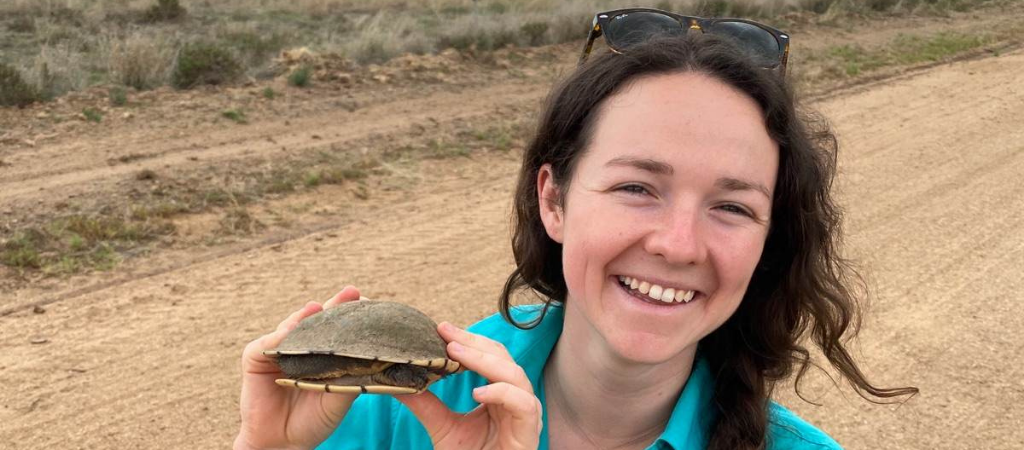
Project Officer Isabella Murphy finds all sorts of wildlife while out and about conducting site visits.
“I always wanted to get into conservation because I was always really passionate about improving our natural environment,” Isabella Murphy said.
“SQ Landscapes Principal Project Officer Vanessa Macdonald is one of my role models because she has a lot of knowledge and it’s just admirable the way she approaches her job. She started out in a male dominated sector and is now well respected within it. She's personable, she’s reliable and she gets stuff done,” Ms Murphy said.
Meanwhile, Principal Project Officer Holly Hosie said a career in a male-dominated industry can come with challenges.
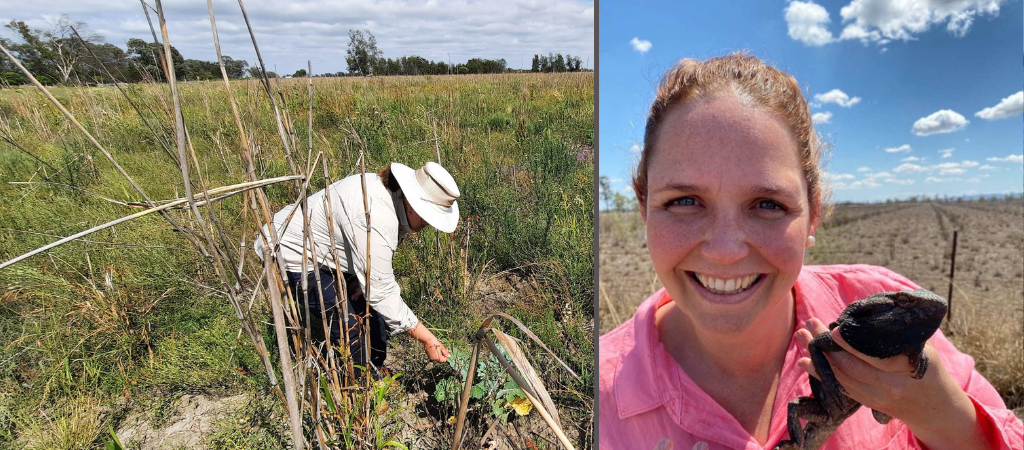
Principal Project Officer Holly Hosie has worked in the Natural Resource Management for two decades.
“Being a woman in science can be tough,” Holly Hosie said.
“I think we are seeing a huge shift with some amazing women scientists and researchers across Queensland and Australia achieving some fantastic things like improving our botanical knowledge, playing an instrumental role in feral animal research, better understanding animal behaviours and soil conservation,” Ms Hosie said.
“Over the years I have met some incredible people and have worked on some amazing projects. Every time we work with farmers, land managers and community members, they are sharing a part of their world and lives with us,” she said.
Ms Hosie said female role models were important in her early career.
“I was so inspired by the female research scientists at University. They helped me to choose my path and make informed decisions about where I was headed,” she said.
Southern Queensland Landscapes is passionate about the advancement of women and girls in science. To submit an expression of interest for our work experience and mentoring program, visit the link here: https://www.sqlandscapes.org.au/careers-and-work-experience
LEARN MORE ABOUT WOMEN AND GIRLS IN SCIENCE: https://www.womeninscienceday.org/
